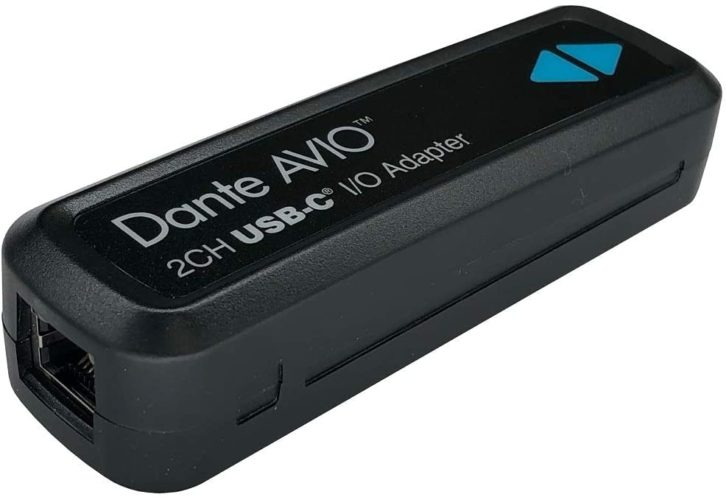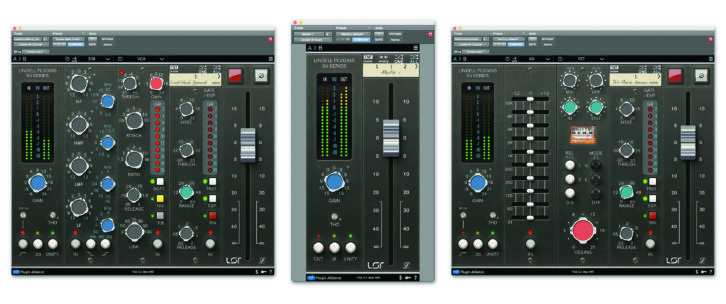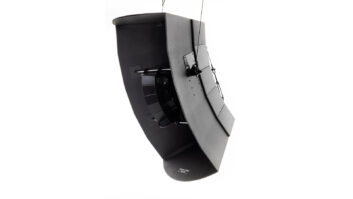TASCAM TM-250U USB Condenser Microphone

Designed for capturing crisp audio when interfaced with personal computers, the TASCAM TM-250U is a solution for high-quality, direct connection computer audio for podcasting, dialog and vocal recording, music recording, conferencing, and other forms of online audio. Featuring a super cardioid polar pattern and a frequency response of 20 Hz~20 kHz, the TM-250U functions via industry-standard USB-C connectors on the Windows, Mac, and Chrome OS platforms.
The microphone makes a direct connection to computers with a USB cable, so no special driver is required. Record voice-over or music directly to the computer’s recording software with stream-optimized 16-bit/48 kHz sampling. The TM-250U provides built-in controls for managing audio, and is equipped with a microphone volume (gain) control, a headphone volume control, and a microphone Mute button that provides additional flexibility for in-the-moment control of audio. The microphone is also equipped with a dedicated headphone output connector (3.5 mm stereo mini jack) for direct monitoring.
Avid VENUE 7 Software

Recently, Avid unveiled its next generation of VENUE software, VENUE 7. The update introduces new features and enhancements for all mixing systems in the Avid VENUE | S6L family. One of the highlights of VENUE 7 is the ability to share I/O between three Avid VENUE | S6L consoles. I/O sharing allows addition of a broadcast desk or second monitor desk to an existing system, or can facilitate changeover between consoles during festival applications.
Microphone signals can be digitally split over the network, so a system can be built using a single set of I/O racks, which reduces cost and complexity without negatively impacting sound quality. All I/O configurations support Avid True Gain technology for automatic gain compensation, ensuring that proper signal levels are maintained for each engineer.
Using a USB flash drive connected to the S6L control surface, VENUE 7 provides onboard 2-track USB recording of 24-bit/96 kHz WAV files and supports playback at any sample rate.
Empirical Labs Arousor Rev 3

Several software manufacturers offer plug-ins that emulate the iconic Distressor compressor, but there’s only one made by Empirical Labs (aka, “ELI”) itself: Arousor Rev 3 (Mac and PC), which introduces some powerful new features.
The most significant improvement is the addition of two Opto Modes. ELI says it based them on the time constraints of two different hardware LA-2As—one vintage and one more modern—giving users additional sonic variety. In either of the Opto modes, you’ll see orange text underneath the Attack and Release knobs that indicates default Opto values for those parameters. If you click on the orange number, it will change that parameter to the recommended setting.
Pressing the Alt button at the right of the ratio indicators accesses two new ratios: 6.5:1 and 7. The new settings emulate those in the T4 Optocouplers modeled for Opto A and B, but you can use them in any of Arousor’s compression modes. ELI also upped the adjustability—not to mention the “geek factor”—for the Soft Clipping circuit with a new “Expert Button,” which opens up an additional user parameter called 2nd Harmonic Control. With the Expert button pressed, you’ll also see Pre and Post buttons for selecting whether the compressor input is before or after the Soft Clipping circuit.
Peavey Aureus Live Digital Mixer

First announced last summer, Peavey Electronics’ Aureus digital mixer is out, offering a 10-inch multi-touch display and 59 dedicated controls that provide direct access to most critical functions with a single touch. The Aureus digital mixer, measuring 6.5 inches x 15 inches x 19.5 inches and weighing 16 pounds., offers a selection of presets for channels, EQ, gate, compressor, scenes and shows, and additionally allows users to save and store presets, scenes or even an entire mix onto a USB drive. The onboard dock allows a tablet to be placed as a second screen, so users can monitor the mix while adjusting a specific channel or separate group on the mixer.
In all, the Aureus offers 14 dedicated encoders, nine motorized faders (100mm), and 45 dedicated backlit buttons. It can connect to most audio sources via its 16 XLR-1/4-inch, RCA, Bluetooth (stereo-long range) and USB (A/B) inputs. Phantom power (48 V) is available for microphones on the 16 channels. There are also 14 outputs, including 10 XLR, USB, and AES digital.
Audinate Dante AVIO USB-C Adapter

Audinate, developer of Dante AV networking technology, has announced the immediate availability of the Dante AVIO USB-C adapter. The Dante AVIO USB-C adapter allows the latest mobile devices and computers to connect to any Dante audio network for playout or recording. The Dante AVIO family of adapters allow users to easily use non-Dante analog, USB, AES3/EBU or Bluetooth audio equipment with a Dante audio network.
The Dante AVIO USB-C adapter connects to devices with USB-C or A ports (cables included) to deliver and receive two channels of audio over a Dante audio network. It requires no additional drivers and works with any application, making it ideal for rapid setup of conference rooms, background music and more.
The Dante AVIO USB-C adapter may be powered via USB or PoE. When connected to a PoE Ethernet switch, 7.5 watts of power is available to USB-C compatible mobile devices, enabling smartphones and tablets to remain charged while connected to a Dante network.
Audeze and Embody Reveal+ Virtual Studio Plug-In

Audeze and Embody have announced the launch of the remastered Reveal+ virtual studio plug-in. This remastered version of Reveal+ delivers the next breakthrough in harnessing cloud computing and artificial intelligence to mix virtually on Audeze headphones. According to the companies, Reveal+ gives producers a visceral experience of feeling like they’re in a world-class studio without being there. The result is producers can make better-informed mix decisions from their Audeze headphones. Reveal+ is available for download now on Audeze’s website.
Features include a more precise personalized HRTF, remastered sound, two new virtual studios designed and operated by Grammy and Multi-Platinum award-winning artist Bob Horn and Erik Reichers, and a refreshed user interface.
Sound Particles Brightness Panner Plug-In

The new Sound Particles Brightness Panner plug-in allows you to use brightness, pitch or MIDI notes to control their movement automatically. From traditional stereo to Ambisonics, from 5.1 to binaural, this plugoin is a tool creative artists will want in their collection, from music to sound design and audio post-production.
Key features include Brightness Analysis, which analyzes the spectrum of sounds to pan them in 3D; Pitch Analysis, which identifies the pitch of sounds to pan them in 3D; MIDI Analysis, which pans sounds in 3D based on MIDI notes; Stereo, Surround, Ambisonics, Immersive and Binaural Outputs; Dynamic Movement that sets how the sounds move, from custom points, speaker positions or to specific directions; and a Sidechain function that uses external signals to control the effect of the plug-in, instead of using the track’s sound.
Alliance Lindell Audio 50 Series Plug-In

If you’re looking to add the sound of API consoles into your music, the Plugin Alliance Lindell Audio 50 Series is an intriguing option. It offers a selection of modeled API processors in a modular channel-strip format. It’s the latest Plugin Alliance product to employ the Brainworx Tolerance Modeling Technology, which emulates the slight differences between channels in an analog console. The Lindell Audio 50 Series includes 32 different TMT channel emulations. You can open either a Channel or Buss version of the plug-in, in either mono or stereo.
Rather than offering just one processor configuration, the Channel version of the Lindell Audio 50 Series plug-in lets you select from several modeled API EQ and compression modules to put between the preamp and expander gate sections. You can mix and match to create custom configurations. The preamp section, which emulates the behavior of an API unit, is on the far left of the GUI. Featuring input gain range of –6 dB to +24 dB, it includes ladder-style VU meters for input and output, an adjustable highpass filter, a –20 dB Pad and a Unity gain switch that keeps the output fixed even if you turn on the Pad. The THD control governs the amount of harmonic distortion, which you can increase or decrease from its default, 12 o’clock position.
The next module over is the EQ, which offers three choices, all modeling API 500 Series EQs. The 50A includes three semi-parametric bands. You can toggle the low and high bands between bell and shelving filters, and switch in a bandpass filter.
New Additions to SSL 500 Series Module

Solid State Logic has introduced two new modular processors as part of revitalizing its SSL 500 Series module range. The classic G-Comp Bus Compressor, E-EQ and E-Dynamics processing modules have been given a fresh, sleek brushed steel facelift, while a feature-enhanced VHD+ module, brand new stereo Ultraviolet Stereo Equalizer (UV-EQ) and SiX Channel (SiX CH) modules, complete the new-look range.
Ultraviolet takes the minimum phase-shift Violet stereo EQ section from the studio-favorite analog processor Fusion, and puts it into the 500 Series format. Over and above Fusion’s Violet EQ, Ultraviolet takes features one step further, adding two dedicated mid-bands, with precision Focus mode for ultimate EQ control. Ultraviolet draws on the SSL legacy of selecting key frequencies and response curves to create a musical and intuitive EQ, designed to quickly dial in the sound of your mix, sub groups and individual instruments.







